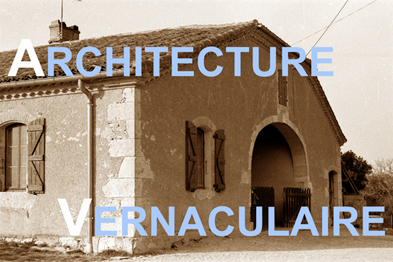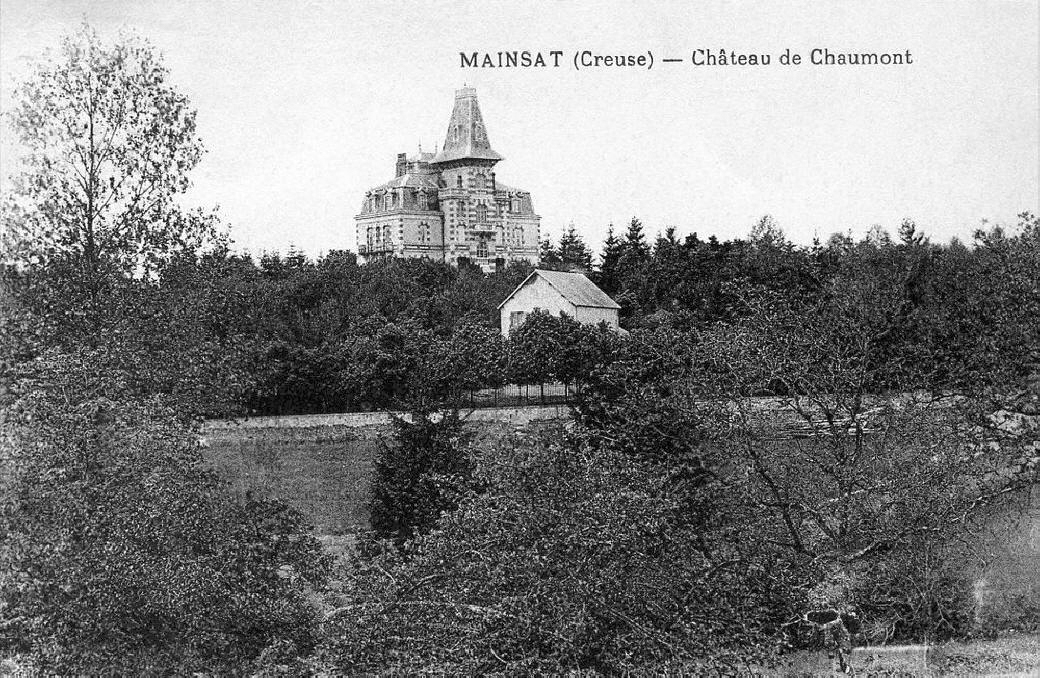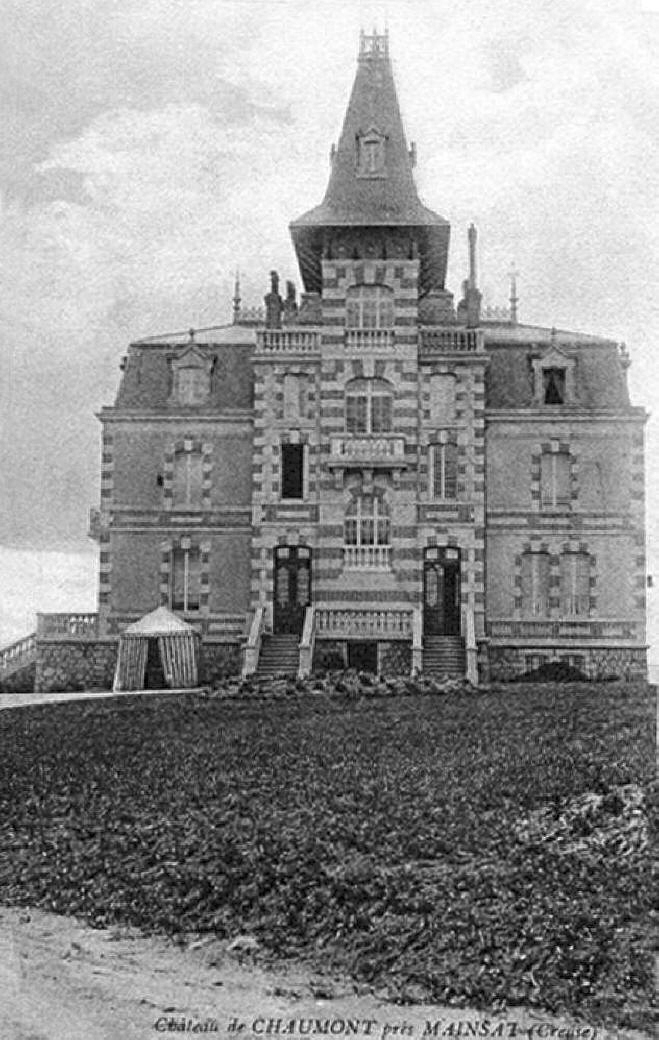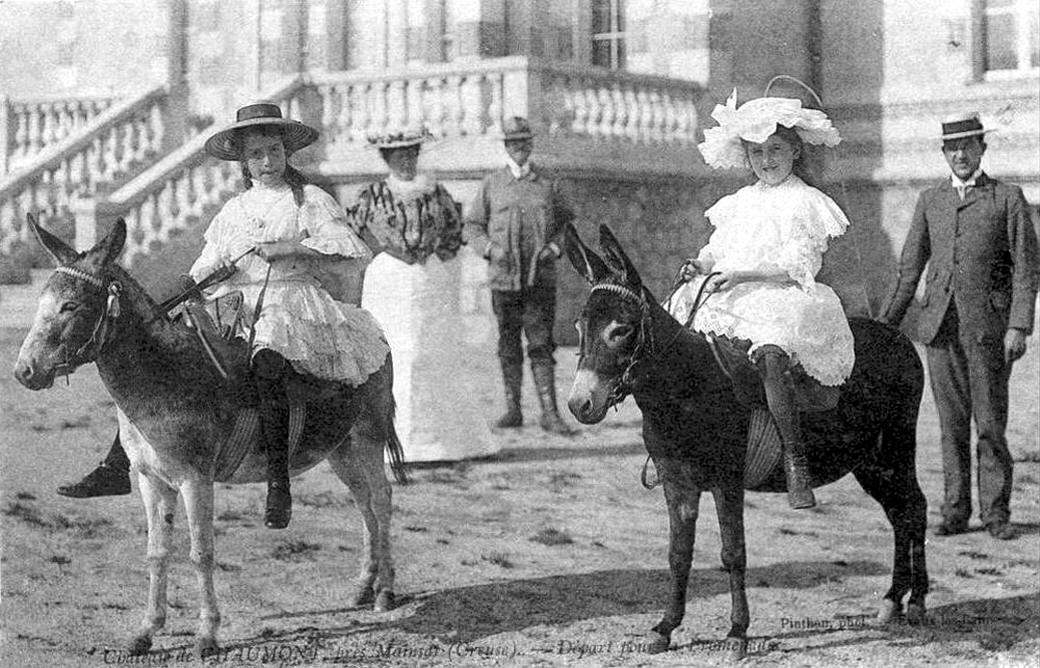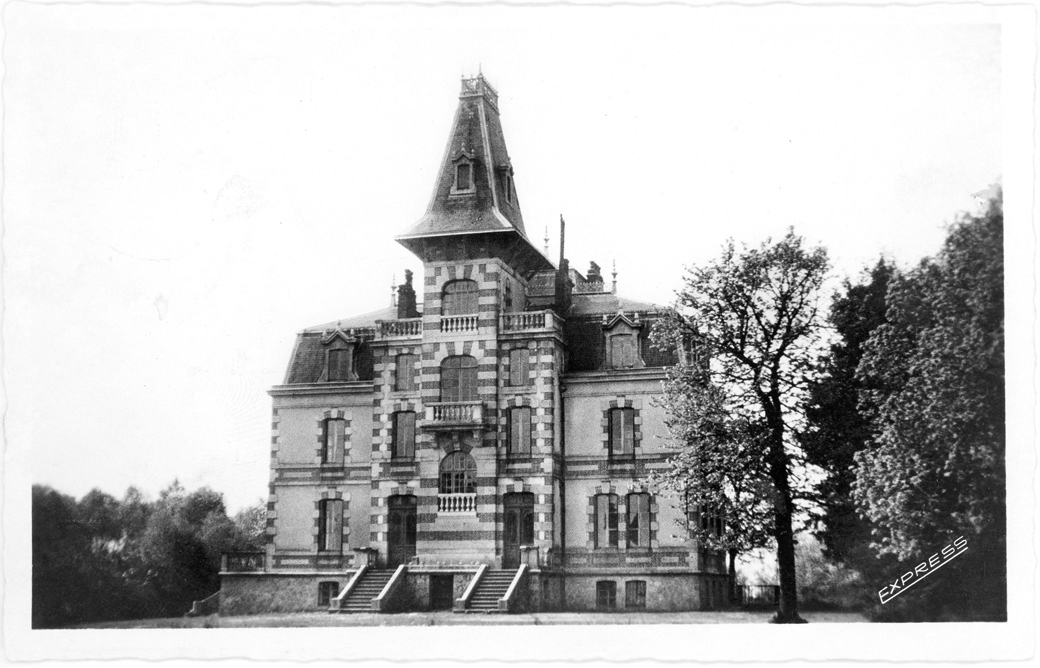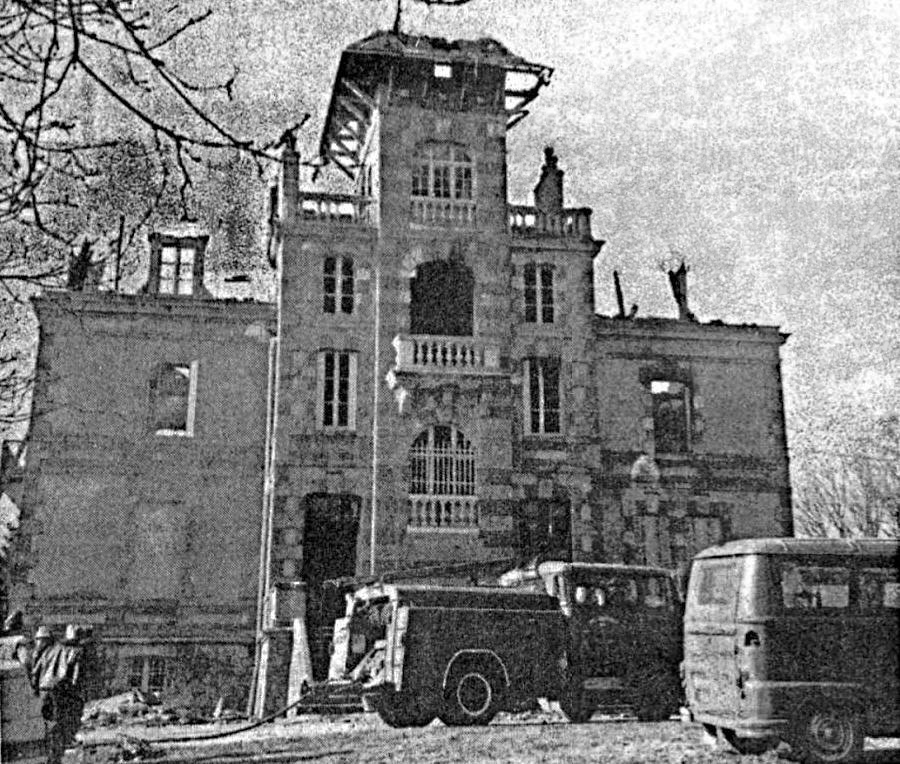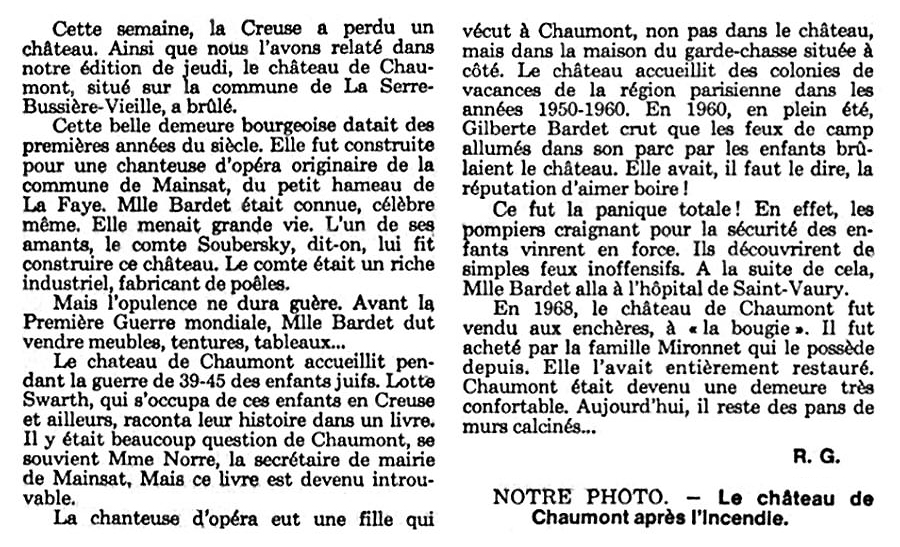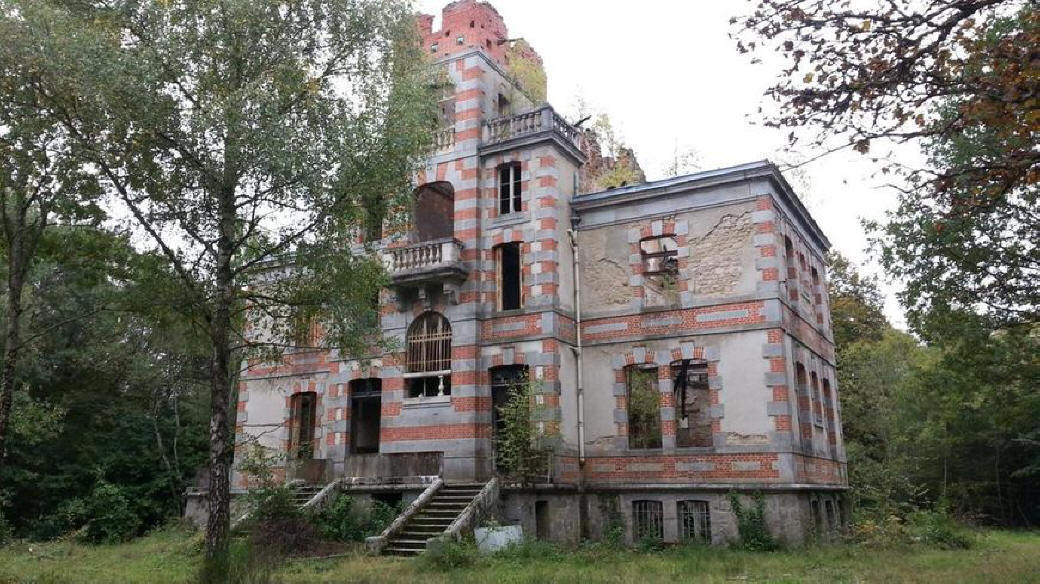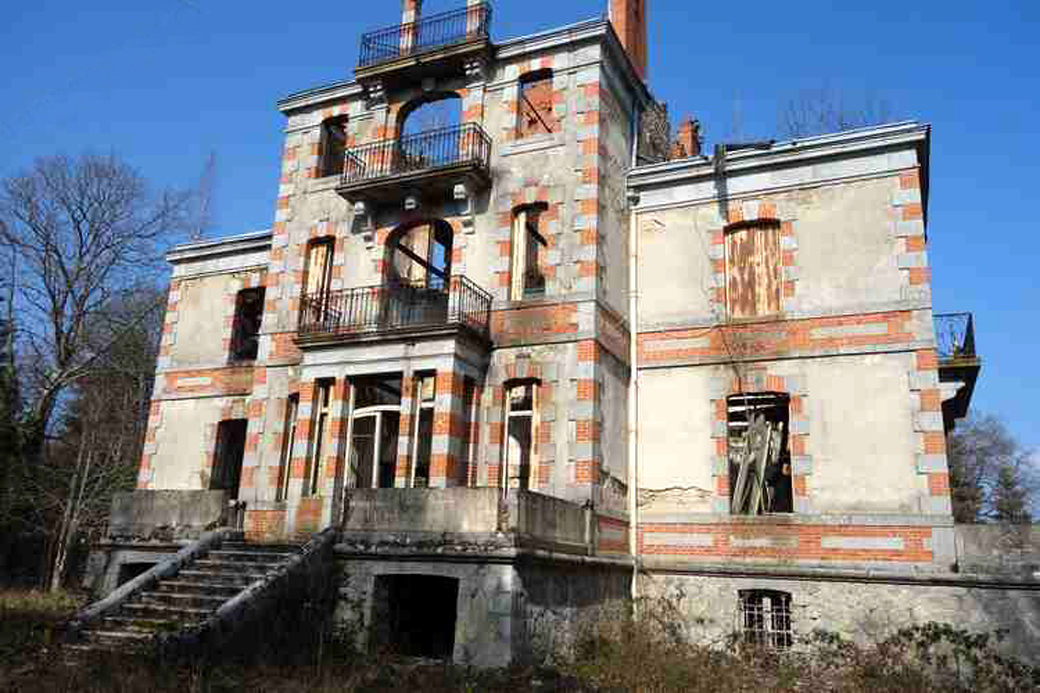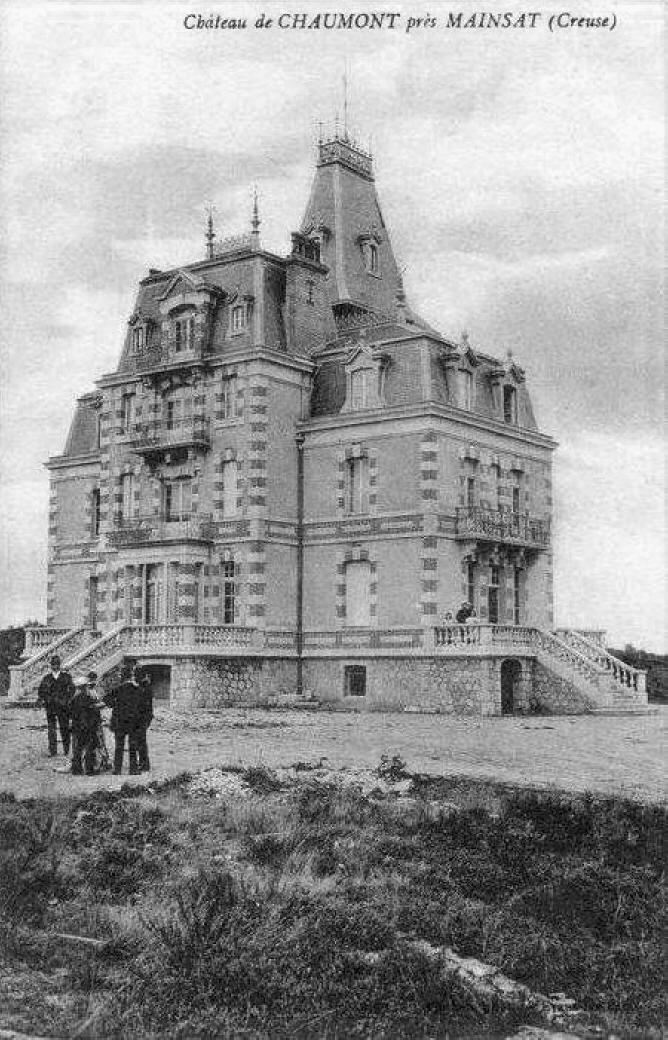INSIGHTS INTO THE CHÂTEAU OF CHAUMONT AT MAINSAT / LA SERRE-BUSSIÈRE-VIEILLE IN CREUSE Christian Lassure The Chaumont château is a large early 20th-century upper middle-class mansion located at a place known as Chaumont, which is astride the municipalities of Mainsat and La Serre-Bussière-Vieille in the Eastern part of the Creuse département. The road leading to the estate – Chaumont road – is in Mainsat while the building itself is in La Serre-Bussière-Vieille. After being gutted by a fire in 1986 and abandoned, the château ruin was purchased in 2022 by a 33-year-old English expatriate, Daniel Preston – a gardener by trade and the founder of the Escape to Rural France vlog on the YouTube Channel –. to prevent its demolition. In his daily vlog, you can follow the progress of the clearing and consolidation work of the building, which is missing the floors, the internal stairs and the entire roof and spire.
THE CHÂTEAU IN ITS HEYDAY Several early 20th-century postcards bring back the vision of the intact building, towering over the surrounding trees, as well as its front and rear façades.
HISTORY The large house was erected in 1886 to serve as a residence for Eugénie Bardet, an opera singer from Mainsat who acquired wealth and fame in Paris during the Belle Époque. She lived there with her daughter, Gilberte Bardet.
In 1939, Gilberte Bardet let the château to the Œuvre de secours aux enfants (OSE), a society tasked with rescuing young Jewish children between 1939 and 1945. Chaumont was one of the three shelters run by the OSE in the Creuse département, at the time part of the « zone libre » (area not yet occupied by Germany). The shelter was run by Jewish educator Lotte Schwartz. The French stand-up comedian Popeck (Judka Herpstu) stayed at the château from 1940 till 1942, as is reminded by a memorial plaque at the outset of Chaumont road. Up to 70 children found shelter there but in 1942, as the Germans were drawing near, the shelter's management chose to send the children to other places in France and Switzerland. After 1945, Gilberte Bardet rented the château to summer camps until 1960. It became a “Centre de vacances et de plein air" (holiday and outdoor centre) under the name “Le Nid” (the nest), as can be read on postcards from the 1950s.
After Gilberte Bardet's death in 1967, the château was sold in 1971 to Jean-François Mironnet, a former valet, confidant and trusted man, but also heir to the fashion designer Coco Chanel, and his wife, a former maid in the latter's service. They converted it and lived there more or less regularly with their son. The former valet set up a workshop there where he made jewellery that he sold in Saint-Tropez. A fire engulfed the whole fabric in the night of 25-26 February 1986. Mrs Mironnet, who was alone in the mansion at the time, managed to escape the flames by fashioning a rope from her bedsheets.
In 2014, the ruin was bought by a certain Patrick Surget at an auction. He put the property up for sale on the Leboncoin website, indicating in his ad that the remaining elements of the château could be dismantled; however, he wanted to find a buyer who would restore the building. This is when Daniel Preston stepped in, acquiring the building under the conditions set by the seller.
ARCHITECTURE The edifice consists of a five-level rectangular main part which runs northeast-southwest. A smaller and lower four-level rectangular wing leans against each of the long sides of the main part. The building's plan resembles a cross with short branches. The first level is a stone-built base serving as a basement. It extends frontwise to form small terraces for the stairs of the front and rear façades of the central part and for the southeast wing. The northwest wing does not have outside stairs. Above the basement is the ground floor, accessible by a double external staircase on the front (northeast) façade, by a second staircase on the southeast façade and by a third on the rear (southwest) façade. The second level is the first floor, the third level is the second floor (attic for the wings). At the level of the slate roof, the façade is reduced to a single bay which serves as a base for the tower. The front façade of the main body has three bays, with the central bay being marked by a succession of three large windows, the lower one with a semicircular arch and the two above with a segmental arch. The masonry alternates ashlars and red bricks. The wings are made of rubble stone masonry with a cement coating, except at corners and openings whose surrounding alternates ashlars and bricks. The roof of each wing is Mansart style, with openings capped by a carved triangular pediment.
The arrangement of the rooms and their uses – when the château was a shelter for young refugees – are known to us thanks to the testimony of Eric Thorn who arrived at Chaumont at the age of 10 and stayed there from October or November 1939 till July 1941, date of his departure for the United States. “In the basement were the heating and the coal containers, the kitchen, the cellar, the reserves, the laundry room, the store of firewood. On the ground floor there were the washbasins in the entrance hall and further in the château’s three wings, the three dining rooms for younger, middle and older children. Uotside meal times, these dining rooms were used for various other purposes. The dining room for older children was connected to a space immediately outside the kitchen by a staircase, but there was no front porch or balcony like the other two dining rooms had. Two cylindrical granite pillars flanked the staircase that led to the "premier étage" (1) (...). There were two dormitories for the little ones, as well as two small rooms for the supervisors. (…) Also on this floor were the facilities for the cook, for the other two staff members and a large area with showers and toilets – but it was not possible to wash. On the floor immediately above there were two dormitories for the middle children. Boys and girls shared bedrooms. If my memory is correct, in my time, there were 15 children in one and 14 in the other. (...) On this floor there were also the dormitory for the older boys and a small dispensary. Another floor reached the base of the tower. There were the dormitory of the older girls as well as Lotte Schwartz’s lodging (...). In addition to being at the head of the shelter, she was in charge of the older childen. (…) Even higher up the tower was a room that was used as a storage room, and even higher up, at the very top, there was a small room that had been found to have no use and which I used with a couple of friends as a meeting room. (...) ». (1) What the French call "premier étage" (literally "first floor") is called "second floor" in American English. Excerpts from: Éric Thorn : de l'Autriche à Chaumont...
It now remains for the restorers to put an architect's name on this beautiful building, to find the dates of the construction site and to make measured drawings of the elevations and levels in the absence of getting their hands on the original plans.
SOURCES : * Vick Vance, Le valet de chambre de Coco Chanel. Il dit : « elle m'avait promis un million de dollars sur son testament », Paris Match, No 1232, 16 décembre 1972, pp. 106-111. * Lotte Schwarzt, on the AJPN website (Anonymes, Justes et Persécutés durant la période Nazie dans les communes de France). * À Mainsat, le château de Chaumont - refuge de jeunes juifs pendant la guerre - est à vendre, Reportage France bleu, 27 septembre 2017. * Hélène Abalo, Mainsat : le château est à vendre, pas son histoire, franceinfo, 28 septembre 2017. * Séverine Pierrier, Un château ayant recueilli des enfants juifs en Creuse en vente sur Le Bon Coin, 17 septembre 2017 http://www.youtube.com/@escapetoruralfrance © CERAV
To be referenced as:
Christian Lassure,
home page sommaire architecture vernaculaire
|
